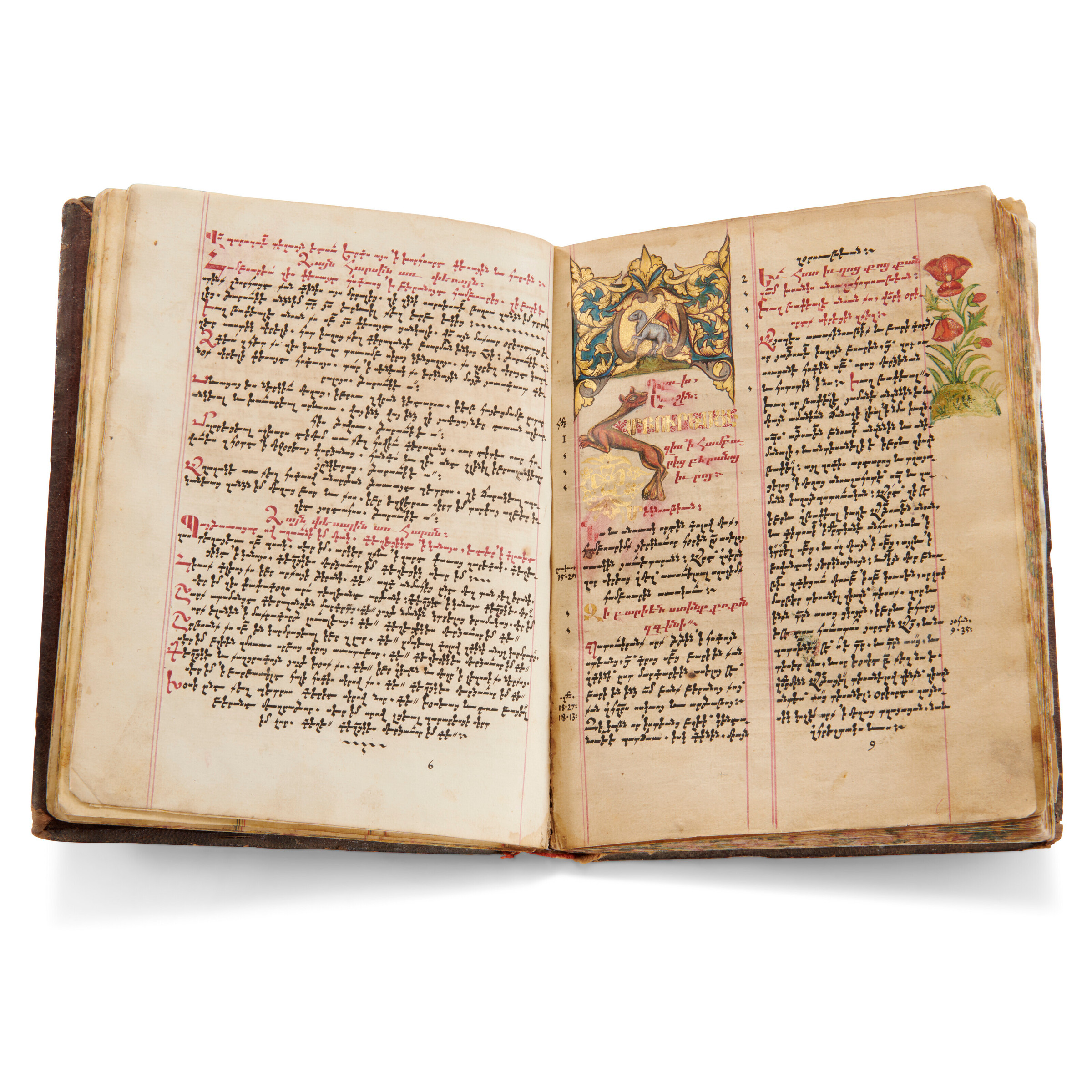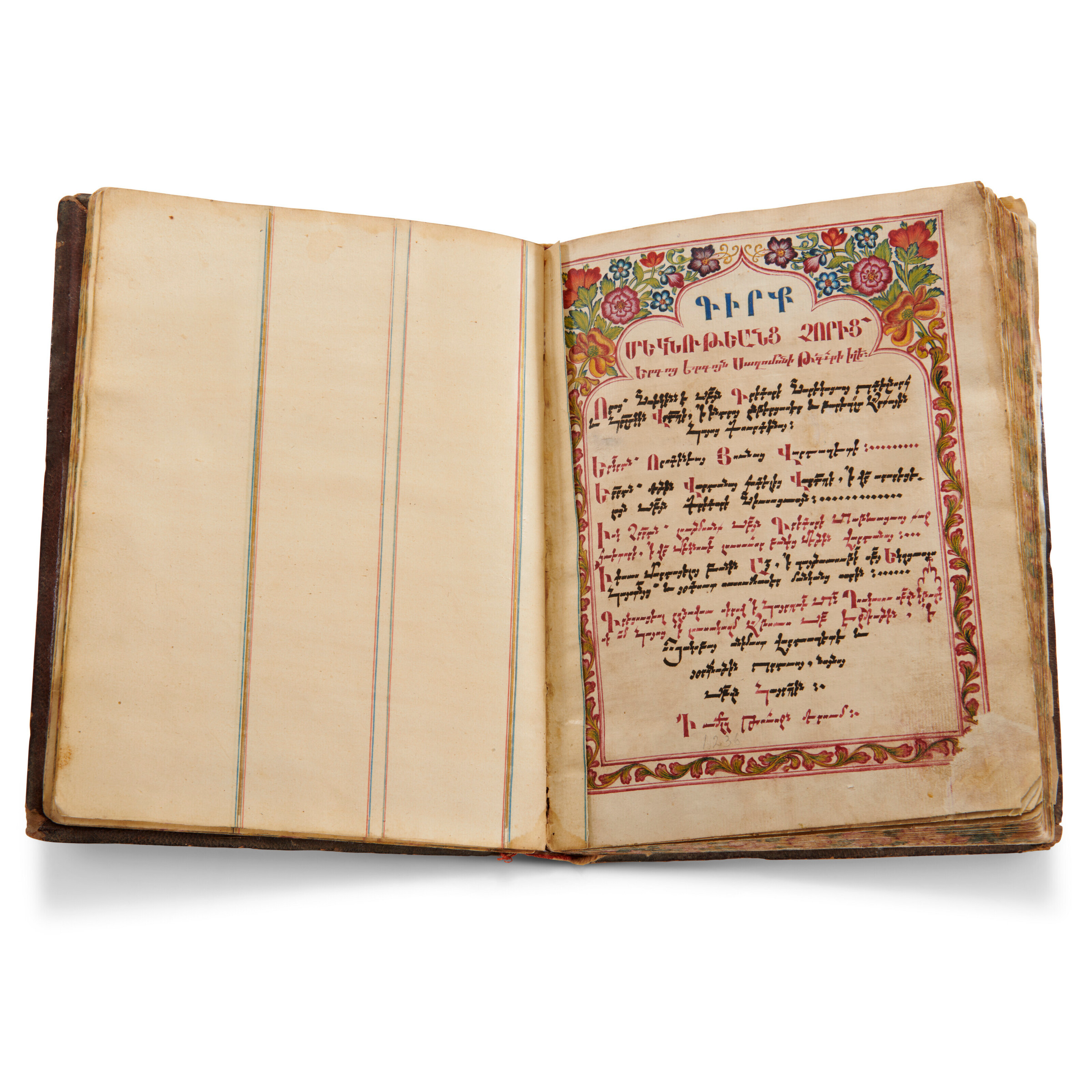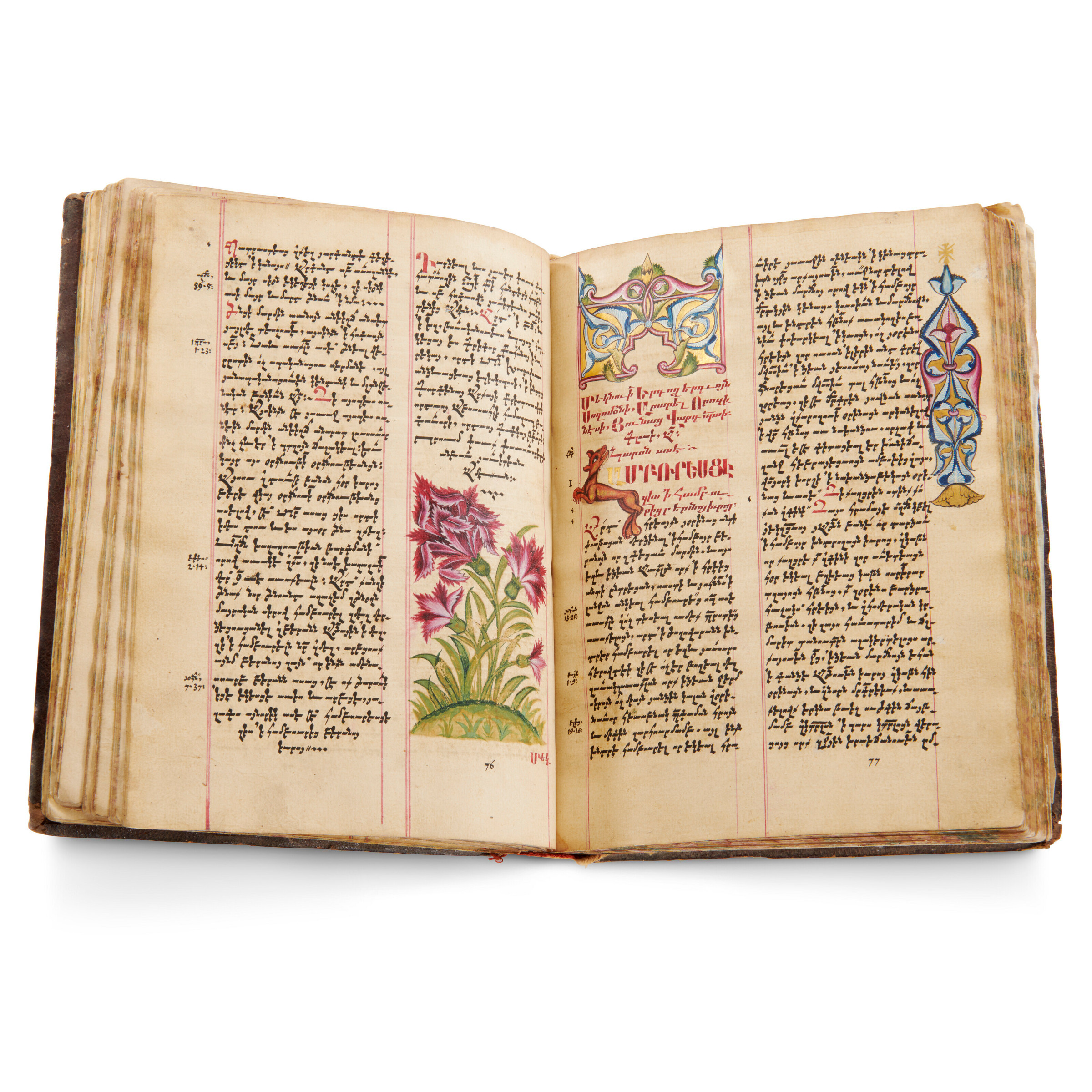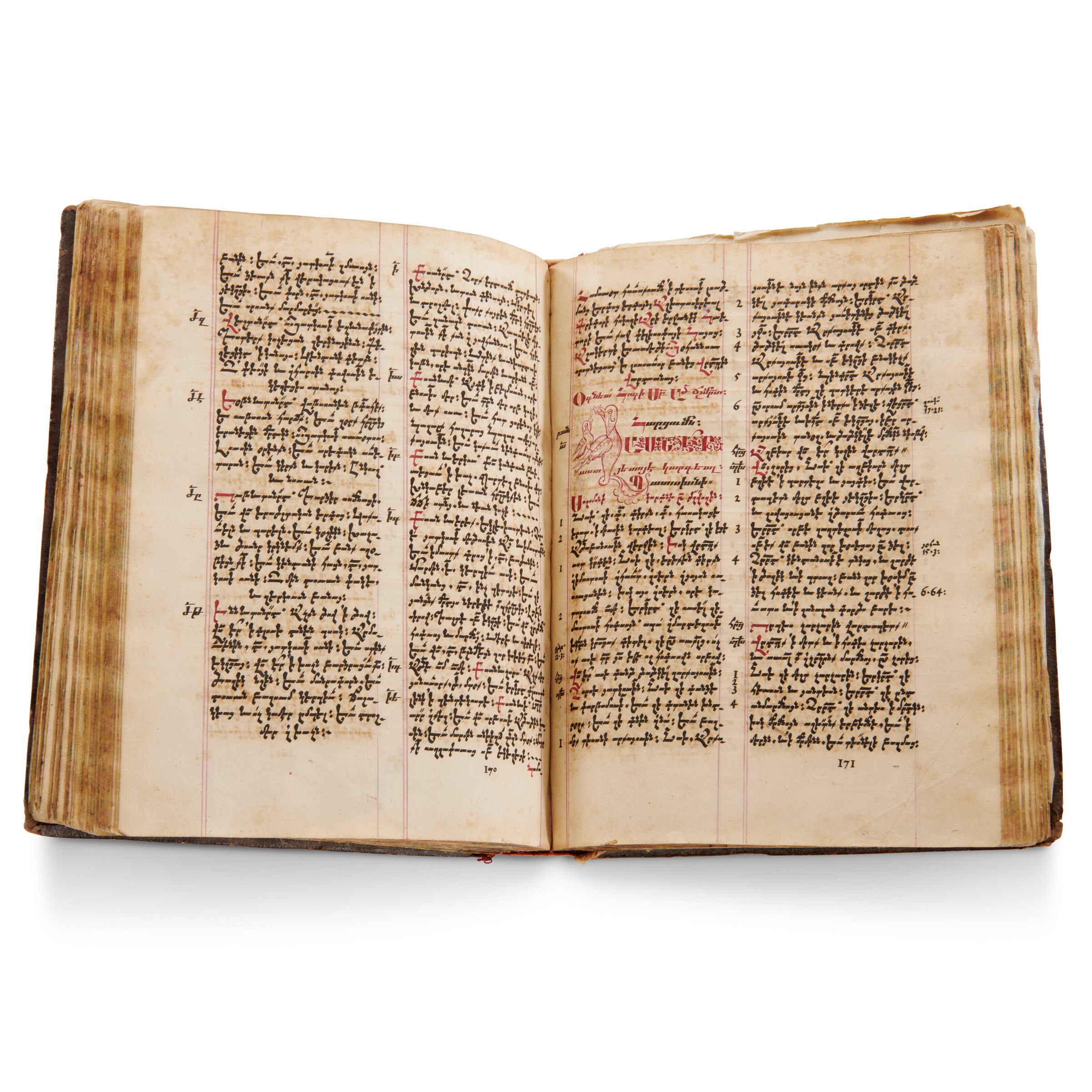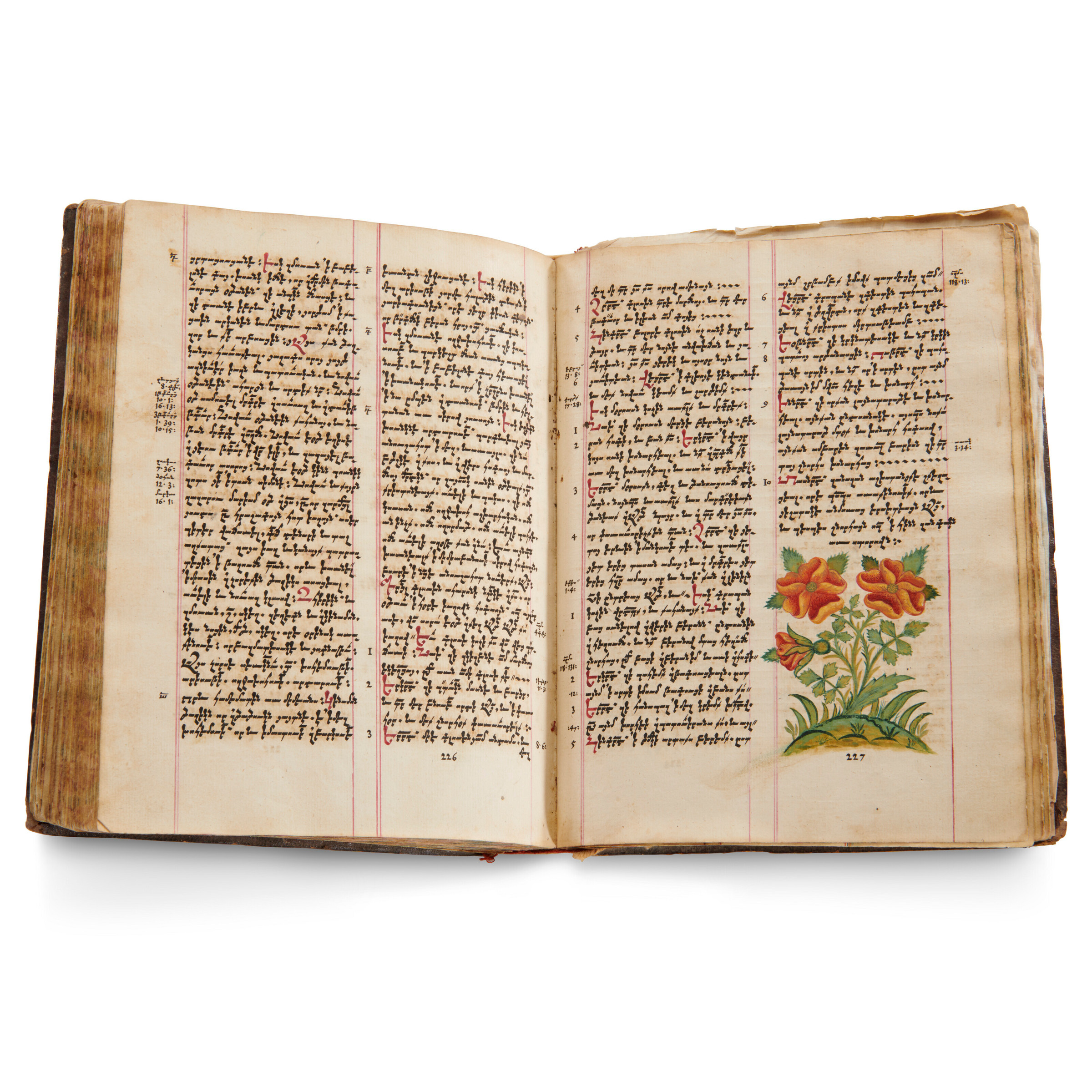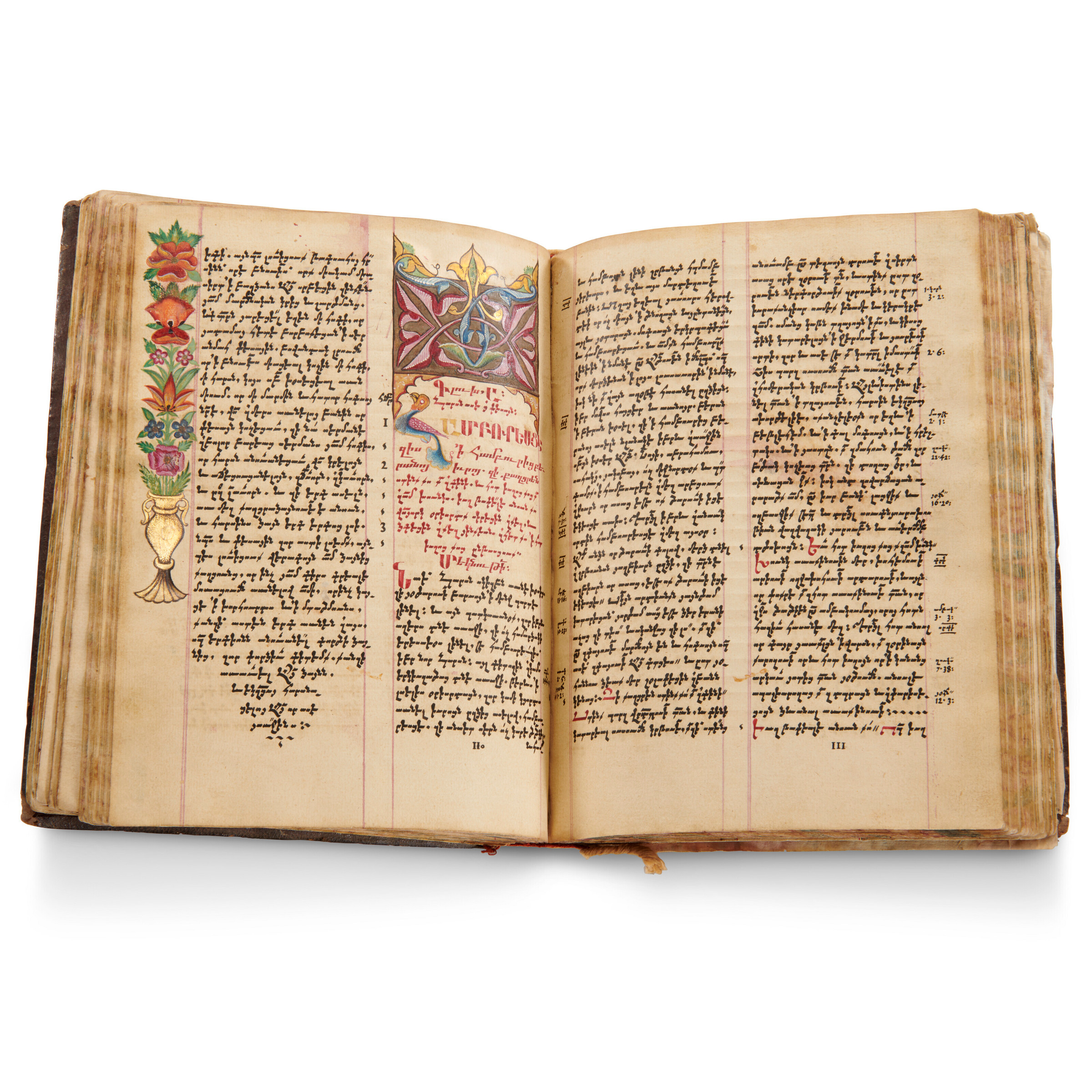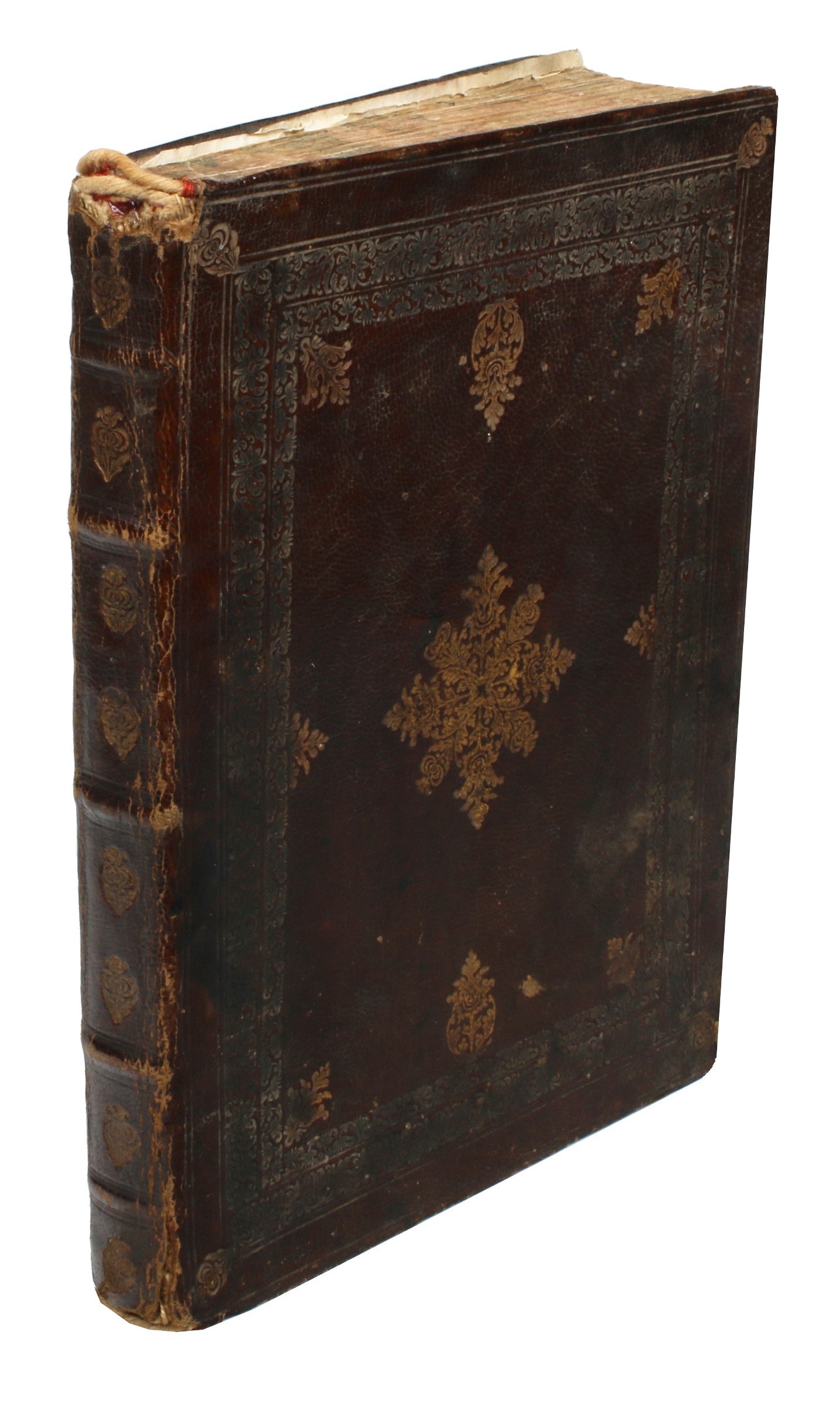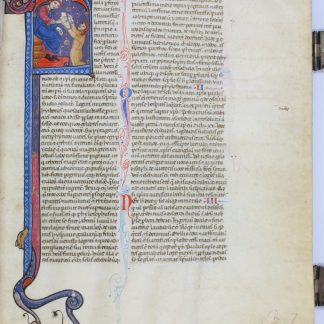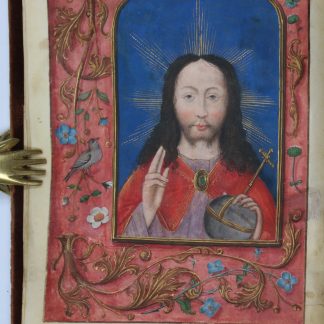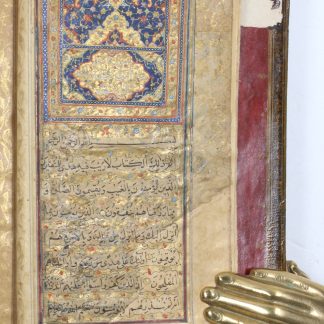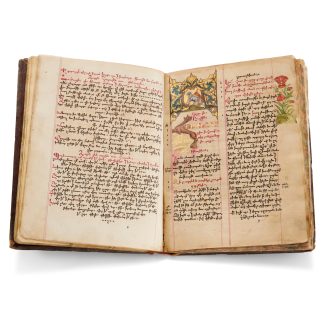Strikingly illuminated manuscript in classical Armenian
Four commentaries on King Solomon’s Song of Songs.
4to (170 x 222 mm). Armenian manuscript on paper. (30 blank), 233 (instead of 235), (29 blank) pp., paginated in the original hand, lacking one leaf (pp. 7-8). 31 lines, 2 columns. Script in black and purple, columns ruled in purple. Illustrated with an illuminated headpiece and border on title-page, 5 further illustrated headers, 3 of which are illuminated, and 4 botanical paintings. Leading and terminal blanks have vertical rules in colours and gilt. Contemporary modified traditional Armenian binding, full leather stamped in blind and gilt, red silk pastedowns.
€ 38.000,00
A striking and finely illuminated compilation of commentaries on the Song of Songs, written in classical Armenian by the scribe, clerk, and notary Yohan Vagharshapatets’i for the patron Yakob (Hagop) vardapet. While it is a valuable piece of art in its own right, one of the manuscript's previous owners, revealed by an inscription, was Prince Georgy Vasilyevich Obolensky (1826-86), an active prince who worked as a lawyer and held the rank of lieutenant general in the Imperial Russian Army.
The four commentaries herein are copied in a professional notrgir (notary) script with some bolorgir (minuscule) and erkat’agir (majuscule) throughout. The first commentary in this compilation is by the famous St Gregory of Narek (ca. 945-1003), beloved by Armenians for his Book of Lamentations, mystical prayers, poetry, hymns, homilies, and other works. His commentary on the Song of Songs, his earliest work, was written at the request of Prince Gurgen-Khachik Artsruni in 977. The second text is the Armenian translation of the Commentary written by Origen of Alexandria (ca. 185-253), the Greek theologian and ascetic. The third was penned in the 13th century by Vardan Arewelts’i (ca. 1200-71), scholar, educator, and vardapet (learned priest), best known for his History and Geography. The fourth and last commentary was composed by Gregory of Tat’ew (ca. 1344-1409), a renowned exegete, scholar, and teacher.
The influence of print technology is apparent in the manuscript, which mixes manuscript tradition and 18th century modernity. It includes a title-page, which is unusual in manuscripts but common in printed books, clearly showing the scribe and artist’s knowledge of and exposure to books produced on a printing press. The floral decorations are unrelated to the text and are included to embellish the book. In the 17th to 18th centuries, such motifs become more prevalent in both late Armenian and Islamic manuscripts, and were possibly introduced through exposure to Western European printed herbal books - which in turn had been inspired hundreds of years previously by Arabic and Greek herbal manuscripts.
Covers lightly worn, binding delicate, a few minor stains. A beautiful example of the Armenian manuscript tradition.

